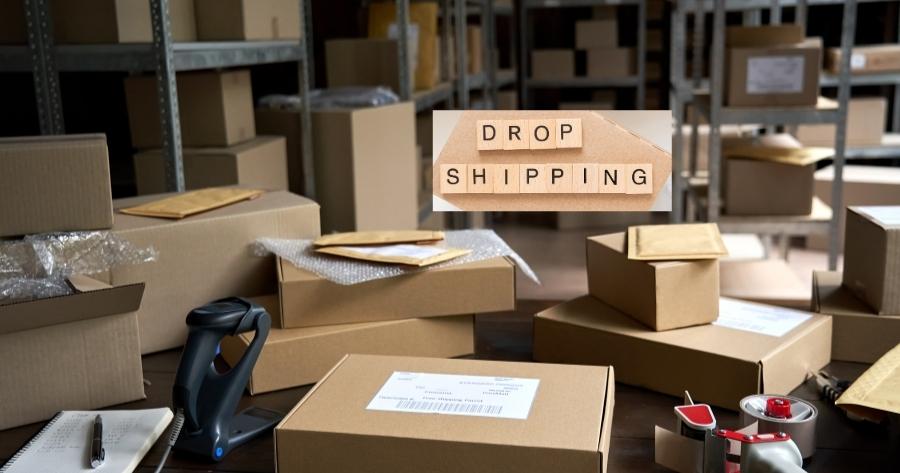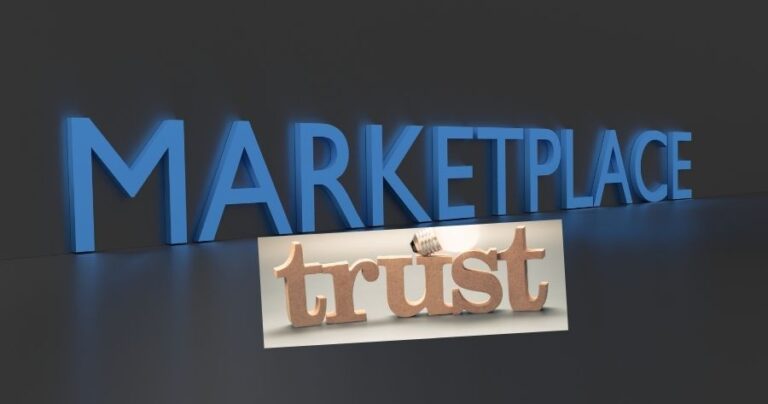
Dropshipping
What is Dropshipping?
Dropshipping is a retail business model where a store sells products it doesn’t physically stock. When a customer places an order, the seller purchases the item from a third-party supplier (usually a wholesaler or manufacturer), who then ships the product directly to the customer. The seller never handles the product physically.
This model drastically reduces startup costs because there’s no need to buy inventory upfront, rent a warehouse, or manage shipping logistics. All you need is a storefront (like an online marketplace or website), a good product offering, and a supplier who fulfills orders reliably.

Marketplace vs Standalone Store Dropshipping
There are two main methods of running a dropshipping business:
- Marketplace-based: Selling on platforms like Amazon, eBay, Etsy, or Walmart.
- Standalone store: Using your own website, usually built with Shopify, WooCommerce, etc.
Marketplace dropshipping differs significantly. You tap into the marketplace’s pre-existing traffic, trust, and ecosystem. The downside? You’re limited by their rules and face tighter competition. With standalone stores, you have total control over branding and customer experience but must spend heavily on traffic through ads or SEO.
Marketplace dropshipping is ideal for beginners who want to minimize marketing costs and validate product ideas quickly.
Pros and Cons of Dropshipping Through Marketplaces
Pros:
- Built-in traffic: Millions of daily active users search for products on marketplaces.
- No need for a website: Everything is hosted and managed by the platform.
- Lower marketing costs: You can make sales without spending money on paid ads.
- Reputation advantage: Selling on Amazon or eBay gives you an immediate trust signal.
Cons:
- Strict policies: Platforms can suspend or ban sellers for minor violations.
- High fees: Marketplaces charge listing, transaction, and referral fees.
- Limited branding: You can’t customize the customer experience as freely.
- Intense competition: You’ll compete with thousands of other sellers, including price-driven ones and major retailers.
Choosing the Right Marketplace Platform
a. eBay Dropshipping
eBay remains a powerful option for beginners because it’s relatively easy to get started. Sellers can list products quickly, and many tools are available for automation. However, eBay has cracked down on retail arbitrage dropshipping (buying from Amazon/Walmart and shipping to eBay customers).
To stay compliant:
- Use wholesale or private-label suppliers
- Don’t include third-party branding
- Ensure fast, trackable shipping
eBay is especially popular for used, refurbished, and niche products.
b. Amazon Dropshipping
Amazon is the most buyer-centric platform in the world, but its dropshipping policies are stringent. You must:
- Be the seller of record
- Use packaging and invoices that identify you, not your supplier
- Handle all returns through Amazon’s systems
Violations can lead to permanent bans. Still, if you follow the rules and source products from authorized suppliers, Amazon can offer immense scale.
Amazon’s “Buy Box” algorithm rewards price, stock levels, fulfillment speed, and seller performance making fulfillment optimization critical.
c. Walmart Marketplace
Walmart’s online marketplace is growing fast. Unlike Amazon, Walmart limits sellers and has a strict approval process. You must:
- Be a U.S.-based business
- Demonstrate fulfillment reliability (2-day shipping preferred)
- Offer competitive pricing
Dropshipping on Walmart must be done through approved suppliers. Orders must ship fast, and customer satisfaction metrics are closely monitored.
Walmart can be very profitable due to less competition and high buyer trust, but entry barriers are higher than Amazon or eBay.
d. Etsy Dropshipping
Etsy is known for handmade, vintage, and unique items. While traditional dropshipping is not allowed, Print-on-Demand (POD) is permitted, as long as you:
- Design the product yourself
- Work with a production partner (like Printful)
- Clearly disclose that a partner manufactures the product
Etsy is ideal for creative entrepreneurs who sell custom t-shirts, mugs, posters, stationery, or jewelry.
e. Facebook Marketplace and TikTok Shop
These newer platforms offer explosive growth and fewer competitors. Facebook Marketplace allows local and national shipping. TikTok Shop lets creators directly sell through viral content.
However, these platforms are less regulated, and sellers are expected to manage customer service more directly. They’re great for testing viral products or leveraging influencer-driven traffic.
Setting Up a Profitable Marketplace Dropshipping Store
a. Creating a Compliant Seller Account
Start by registering as a seller on the marketplace of choice. This involves:
- Creating a business entity (LLC or sole proprietorship)
- Setting up a business bank account
- Verifying identity and address (submit utility bills, business licenses, etc.)
- Linking payment processors
Compliance from the beginning ensures smoother scaling and reduces account suspension risk.
b. Choosing a Profitable Niche
Don’t just pick random trending products. A good niche is:
- Evergreen (not overly seasonal)
- Solves a clear problem
- Isn’t over-saturated
- Offers upsell potential
Examples:
- Pet care (treats, grooming tools)
- Home fitness gear
- Baby accessories
- Car gadgets
- DIY craft tools
Avoid niches that require FDA approval or involve liability issues (e.g., supplements, medical devices).
c. Sourcing Reliable Suppliers
Reliable suppliers = fewer returns, better reviews, and fewer disputes. Ideal sources include:
- Wholesale suppliers (e.g., Alibaba, SaleHoo, Syncee)
- Print-on-demand providers (e.g., Printify, Gelato)
- U.S./UK-based dropshippers (e.g., Spocket, CJ Dropshipping, Modalyst)
Criteria for selection:
- Consistent stock levels
- Fast, trackable shipping
- Easy return policies
- No third-party branding
Avoid suppliers who don’t communicate or can’t fulfill within your marketplace’s required timeframes.
d. Product Research & Validation
Use product research tools to spot winners:
- Amazon: Jungle Scout, Helium 10
- eBay: Terapeak
- General: Google Trends, TikTok Creative Center, Facebook Ad Library
Check:
- Search volume and demand
- Profit margin after fees
- Number of competing listings
- Reviews and customer pain points
Only launch products after validating demand and competition.
Listing and Optimizing Your Products
a. Writing High-Converting Listings
Every listing should grab attention and convert. Use:
- Titles: Maximize keyword usage, but keep readable (e.g., “Adjustable Dog Car Seatbelt – Safety Harness for Small Pets”)
- Bullet Points: List clear benefits, not just features
- Description: Tell a story or address common pain points
- Images: Use lifestyle images + close-ups + infographics
- Video: Where supported, show the product in use
b. Pricing Strategy
Price too high and you’ll be ignored. Price too low and you’ll lose profit. Balance by:
- Calculating all costs (product + shipping + marketplace fees)
- Targeting 20–50% profit margins
- Using tiered pricing (e.g., 1 for $15, 3 for $39)
- Offering bundle deals or BOGO
Factor in returns, promos, and price wars when planning.
c. SEO for Marketplace Listings
Each platform has its own search algorithm. General tips:
- Include keywords in titles, tags, and descriptions
- Don’t keyword stuff focus on clarity
- Add relevant product attributes (e.g., material, dimensions)
- Regularly update stale listings
Use keyword tools specific to each platform (e.g., eRank for Etsy, Amazon Keyword Tool).
d. Inventory and Order Management
Manual management leads to overselling, late shipments, and account issues. Use tools like:
- AutoDS
- DSMTool
- Sellbrite
- Ecomdash
They automate inventory syncing, stock alerts, and order routing. Set reorder alerts to prevent out-of-stock issues.
Fulfillment, Customer Service, and Compliance
a. Handling Orders and Tracking
Best practices:
- Automatically send orders to your supplier
- Ensure tracking numbers are uploaded ASAP
- Monitor delivery status and handle delays early
If your platform allows, offer real-time tracking via AfterShip or similar apps.
b. Managing Returns and Refunds
Returns are part of eCommerce. You should:
- Match your marketplace’s return policy
- Make it easy for customers to initiate returns
- Have a return address (local if possible)
- Offer refunds quickly to avoid disputes
Work with suppliers who support return handling to simplify the process.
c. Customer Communication
Fast, friendly support prevents negative reviews and suspensions. Guidelines:
- Respond to all messages within 12–24 hours
- Acknowledge complaints, apologize, and offer solutions
- Use canned responses for common questions
Negative feedback? Always respond professionally and offer a resolution publicly when possible.
d. Ensuring Platform Policy Compliance
Each marketplace monitors:
- Order defect rate (ODR)
- Late shipment rate (LSR)
- Valid tracking rate (VTR)
Avoid:
- Retail arbitrage (e.g., buying from Amazon for eBay)
- Fake tracking numbers
- Delayed fulfillment
- Misleading product titles
Read updated seller policy pages monthly.
Marketing and Scaling Your Dropshipping Business
a. Using Ads to Drive More Sales
Use marketplace-specific ads:
- Amazon: Sponsored Products, Brands
- Etsy: Promoted Listings
- eBay: Promoted Listings Standard
- TikTok/Facebook: Product Ads + Shoutouts
Start with a small budget, monitor conversion rates, and scale winners.
b. Collecting Reviews and Social Proof
More reviews = more trust = higher sales. Strategies:
- Automate review requests (where permitted)
- Ask for feedback in post-purchase emails
- Add inserts asking for reviews (check TOS)
Don’t incentivize or fake reviews platforms penalize hard.
c. Outsourcing & Automation
As sales grow, your time becomes more valuable. Automate:
- Order routing
- Tracking updates
- Email communication
- Product listing
Hire virtual assistants for:
- Customer service
- Product research
- Order issue resolution
Use Zapier or Make for cross-platform automations.
d. Diversifying Product Range and Marketplaces
Avoid putting all eggs in one basket. Expand by:
- Selling on multiple platforms (e.g., eBay + Etsy)
- Launching your own Shopify store
- Building an email list
- Launching niche product lines
Use inventory sync tools like Sellbrite to avoid overselling across channels.
Avoiding Common Pitfalls in Marketplace Dropshipping
a. Violating Terms of Service
Most platforms prohibit:
- Retail arbitrage dropshipping
- Third-party invoices or packaging
- Misrepresenting stock locations
Always use verified, approved suppliers and comply with platform-specific rules.
b. Long Shipping Times
Long delivery times = bad reviews. Solutions:
- Source from domestic suppliers
- Use fulfillment centers (like Deliverr)
- Set realistic delivery expectations
Never promise “2-day delivery” if your supplier takes 15 days.
c. Quality Control Issues
Low product quality leads to returns, refunds, and chargebacks. Tips:
- Order samples before listing
- Read supplier reviews
- Test packaging, instructions, and usability
d. Overdependence on a Single Platform
Account bans can end your business overnight. Hedge by:
- Selling on multiple platforms
- Building your own email list
- Launching a Shopify or WooCommerce site
- Owning your customer base
Conclusion
Marketplace dropshipping is one of the fastest ways to start an eCommerce business. The infrastructure is already built, and traffic is ready for you. However, success requires:
- Product-market fit
- Reliable fulfillment
- Marketplace compliance
- Excellent customer service
Don’t chase trendy products blindly. Build a brand slowly, use data to make decisions, and always plan for long-term growth.





